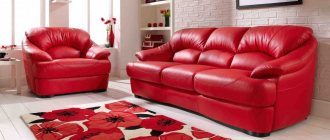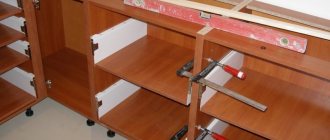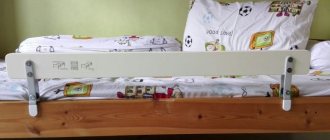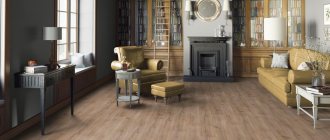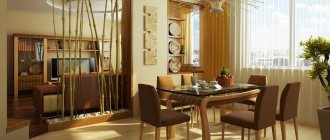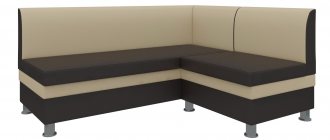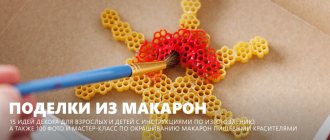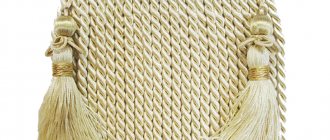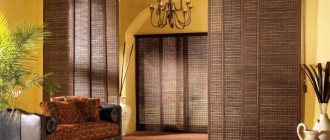Why choose coniferous plants for the garden
Why do people today increasingly prefer to see coniferous plants in the landscape design of small areas? There are many reasons for this. First of all, there is the unfailing aesthetics of evergreens. They are beautiful both in the sun and in the snowdrifts. Plants are not pretentious. They do not need any special conditions for growth. They are easy to fit into any landscape composition.
Coniferous plants will easily fit into any landscape composition
The presence of even low-growing coniferous plants will create a soft microclimate on the site. Their taller relatives are able to absorb noise and dust. Coniferous plantings provide good protection from gusts of wind. Add to this the high productivity of oxygen by conifers plus the release of phytoncides that are super beneficial to human health, and the question of whether or not their representatives should be in the landscape of your dacha will be resolved automatically.
Examples of use in landscape design
In the design, it is advisable to combine conifers that differ in size, type and color. Yellow juniper, blue spruce, and green cypress coexist perfectly in one composition.
Bright representatives of the “needle-shaped” can coexist with any other plants, representing the decoration of a flower bed or rock garden.
Important! Conifers look great surrounded by stones.
And lastly, tall spruces, pines, and larches can act as a beautiful backdrop for flowers or garden figurines. For these purposes, take fast-growing varieties.
Choose conifers for your dacha from the 15 listed, combine them with each other or use them as a free-standing decoration on your site.
Types of coniferous plants for the garden
“Dwarf coniferous plants remain the most popular for small areas”
For garden plantings, you should choose representatives of the following categories of evergreens:
- yew;
Yew coniferous plants for the garden
- cypress;
Cypress trees in the garden
- pine.
Pines for the garden
Dwarf coniferous plants remain the most popular for small areas. Experts recommend taking a closer look at junipers. Light-loving conifers are ready to grow either in sand or on rocky soils. Their representatives may have a columnar or creeping crown. These representatives of coniferous plants saturate the air with the finest healing aroma. In landscape design, decorative coniferous plants of this type become decorations for rocky compositions and are actively used in creating natural-style gardens.
Creeping juniper
Unpretentious thujas, which take on any architectural form, are in demand in the design of alleys and are suitable for hedges. Plants practically do not respond to transplants and are not afraid of smoky areas, so they can grow near roads.
Tui with a topiary haircut
Dwarf coniferous plants of thuja varieties with soft scaly needles of bright green color and geometrically correctly formed crowns are planted:
- in the rock garden,
- group plantings,
- to the slides.
Rock garden of coniferous plants
Representatives of larches are interesting in garden plantings. Low-growing coniferous plants of these species will become a worthy decoration of rocky landscapes, while tall individuals are collected in group plantings. They are not bad when grown alone. Larches impress with their durability. Their lifespan is calculated in centuries.
Larch in group planting
Pyramid firs stand out for their medicinal qualities. Due to the high altitude, their representatives are mainly planted in single plantings.
Pyramid firs
The most unpretentious pine and spruce trees are found in almost all compositions. They delight with the variety of crown colors, height range, and readiness for topiary haircuts.
What goes where
Tall ornamental coniferous plants in the landscape of a small area will take on an accent role. They become the center of harmonious plant compositions.
Medium-sized species of coniferous plants decorate paths, entrance areas, and work as hedges.
Coniferous hedge
Dwarf coniferous plants are ubiquitous in garden landscape design. They are relevant in any corner and can successfully complement any composition. They are especially good in combination with decorative herbaceous plants.
Tall or dwarf conifers?
If you choose between tall or low-growing evergreens, the latter will have clear priority.
Given that they are an exact copy of the full-length original and have all the stages of development characteristic of the variety, low-growing coniferous plants do not require so much space to exist. They are more adapted to the decorative mission, therefore they are more harmoniously perceived in rockeries. They are valuable because they can be grown in containers, which makes the plants mobile and allows them to be moved to any garden corner and even into the house. Small growth contributes to a quiet winter. Completely covered with snow, coniferous plants do not freeze.
Dwarf coniferous plants in the garden
Although some of the dwarf plants are not as durable as their natural prototypes, however, the use of even these types of coniferous plants in landscape design gives excellent results.
To extend the life of your green friends, they need to be provided with proper care, special attention, while paying attention to the correct application of fertilizing.
Care instructions
Those who have carefully studied the descriptions of the species already know that minimal care is needed for conifers:
- Watering. Additional moisture is required only in the first couple of years after planting, after which the plant can feed on its own.
- Feeding. They apply it once every 2-3 years (the older they are, the less often), but they begin to fertilize from the second year of life in a permanent place.
- Mulching. A layer of sawdust, peat or bark will protect the soil from excessive evaporation of moisture, suitable for moisture-loving conifers.
- Trimming. Not all varieties need pruning: mainly dwarf or creeping species should be pruned. This is done once a year, the most favorable time is March. Sanitary pruning is carried out as necessary, removing dried branches.
Fertilizer rules for coniferous plants
In general, dwarf coniferous plants growing in garden lands do not require large amounts of nutrients. This is due to the lack of full foliage shed for the winter. Trees do not need to restore their crown in the spring. They are also not burdened with the process of abundant fruiting, so they require additional minerals only to force out the annual growth, which, by the way, is not so great in low-growing coniferous plants.
Coniferous plants do not need a lot of fertilizer
What do conifers support?
Garden nutrient mixes are not suitable for trees of this family. They react even worse to organic matter such as manure and herbal infusions. Such fertilizers provoke rapid growth development in coniferous plants, which often ends in the death of individuals. And the problem here is not the overdose, but the chemical composition. If there is no suitable feeding, it is better not to feed ornamental coniferous plants at all, rather than to give them anything. Today there are no problems with the assortment of specific nutrient mixtures, but even if there is a label on the label saying that this type of fertilizer is for coniferous plants, do not rush to purchase it. Review the components first. Evergreen trees do not require high levels of nitrogen compounds. They activate the growth of new shoots. The process will be so fast that the new shoots will not have time to mature, which will lead to their inevitable death in the cold. For the same reason, coniferous plants in landscape garden design should not be given diluted mullein.
Experts insist that the optimal compositions for them are:
- rotted compost;
- vermicompost.
Vermicompost is the optimal fertilizer for conifers
How to fertilize correctly
To ensure that low-growing coniferous plants do not lose their decorative value, it is enough for them to be fed only twice during the summer. The first portion is applied during the period of activity of growth points, the second - in the last days of August. Late application of the last portion of fertilizer for coniferous plants is prohibited. In order for trees to absorb fertilizer faster, it is recommended to use liquid varieties. The finished concentrates are diluted according to the instructions and poured into the tree trunk circles. After watering, mulch the soil.
Mulching the soil for coniferous plants
If granular types of fertilizers for coniferous plants are used, then they are sprinkled along the perimeter of the tree trunk circle and mixed with the soil by digging the latter or loosening it. Compost is added in the same way.
If the soil is overly acidic, it is better to fertilize dwarf coniferous plants with dolomite flour. It contains calcium and magnesium in a form that is easily absorbed by the root system.
Dolomite flour will remove excess soil acidity
Araucariaceae
An ancient family of conifers, according to modern scientists their age exceeds hundreds of millions of years. The main part of the genera grows in the Southern Hemisphere, and only one - in the Northern Hemisphere. Lives in tropical and subtropical forests.
Agathis
The trees, whose height often reaches 70 m, easily tolerate drought and grow well in the shade. The soil is suitable loamy, loose, drained. Planted in spacious areas protected from the wind. The lower temperature limit is -20 °C.
Agathis is interesting for its variety of leaf shapes - from narrow, pointed leaves typical of conifers to lanceolate.
Araucaria
Unlike agathis, araucarias do not tolerate frost and are intended mainly for home growing. “Tub” specimens rarely grow more than 2 m in height.
In the garden, pots with araucaria are used to decorate flower beds or areas, verandas with good diffused lighting.
Read more about araucaria and its care here.
Diseases of coniferous plants
“You can protect the planting of coniferous plants in landscape design by timely removal of dried specimens, along with the roots”
Pickiness and endurance do not save representatives of this family from diseases. Ornamental coniferous plants especially suffer from infectious diseases caused by fungi. In second place are ailments caused by inappropriate living conditions, in particular those associated with excess moisture. Excessive soil moisture and waterlogging cause necrotic needles.
Thujas, yews, and spruce trees really don’t like their roots drying out, so their tree trunk circles should always be mulched. Peat and mowed grass can be used for this.
Thuja tree trunks should be mulched
Significant losses of dwarf coniferous plants living in containers are caused by damage to their roots by soil-dwelling fungi of the types Pythium and Rhizoctonia. Tracheomycosis wilt is caused by lesions of anamorphic fungi. These parasites launch mycelium into the vascular bed of trees and thrombose its lumens with overgrown biomass. First, the yellowed coniferous cover falls off, and then the entire plant gradually dries out.
Tracheomycosis wilt of conifers
Seedlings of coniferous plants are especially vulnerable in this regard. It is almost impossible to save them. The infection is of a spore-forming nature, so its pathogens are perfectly preserved even in plant debris. The disease spreads through contaminated soil or infected seedlings of coniferous plants for the garden. The development of the outbreak is facilitated by swampy soil and low sunlight.
Plantings of coniferous plants in landscape design can be protected by timely removal of dried specimens, along with the roots. As a preventive measure, it is recommended to water the soil under coniferous fungicidal solutions, for example Fundazol.
Treatment with fungicidal solution
Gray mold is no less dangerous for coniferous plants. The above-ground parts of young animals are already susceptible to rot. The disease is the scourge of thickened plantings. An alarming symptom is a gray-brown, dust-like coating on the shoots.
Gray mold on pine needles
Schutte is becoming a serious problem for breeders of ornamental coniferous plants. The cause of the development of the problem is again fungal, only ascomycete species. At the initial stage, on the needles you can see thin transverse lines, like dark threads intercepting the needle. The spread of spores is facilitated by increased air humidity in moderately warm weather.
Needles infected with Schutte
Timely thinning of plantings and preventive spraying will help get rid of the chute.
Rust lesions of coniferous plants for the garden are also considered particularly dangerous. The causative agent of the disease is a diverse host, so it is easy for the infection to spread to deciduous trees and other garden flora.
Rust lesions of coniferous plants for the garden
Pine spinner is manifested by an S-shaped deformation of the shoots and the death of their tops. In spruce trees, the disease is manifested by the formation of round, dusty aeciopustules of a dark brown hue on the inner side of the scales. Cones linger on the branches of coniferous plants for several years. The seeds they produce are not germinating. Curvature of the shoots is observed.
Pine spinner
The most effective protective measure is considered to be spatial isolation of diseased specimens. Be sure to cut out damaged shoots. The resistance of low-growing ornamental coniferous plants to rust can be increased by using immunostimulants and specific microfertilizers.
Representatives of junipers and larches also suffer from cancerous lesions. Biatorella type of cancer progresses in the tissues of the cortex. It dries out, changes color, and cracks. As a result, the wood underneath the bark begins to die.
Biatorella type of cancer progresses in cortical tissues
Nectria cancer is an enemy of ornamental coniferous plants of the juniper genus. Specific brick-red pads appear on their bark. The development of the disease is accompanied by the death of the bark and a change in the color of the needles.
Nectria cancer on juniper
On larch, cancer forms entire wounds, deeply corroding the trunks. The height of the disease occurs during the rest period.
Larch affected by cancer
In therapeutic measures, cleaning of wounds and affected areas followed by treating the areas with putty. In the absence of garden varnish, you can use paint with a drying oil base. Spring and autumn spraying of plantings with Bordeaux mixture will provide protection against diseases for coniferous plants.
Spring-autumn spraying will protect conifers from diseases
Yew
Representatives of the species live mainly in the Northern Hemisphere. Like all conifers, they retain their modified green foliage all year round. The plants are interesting because of their lifespan - over two thousand years - and their fruits - the only conifers that form berries rather than cones.
Yew renews itself extremely poorly - seeds that fall from the mother tree almost never germinate. The reason is that pine litter, when decomposed, synthesizes substances that kill seedlings.
Yew
Only a few species are grown for decorative purposes: short-leaved, berry, pointed, and Canadian. Although the initial height of yew trees exceeds the 10-meter mark, breeders have developed miniature varieties. Hybrids with a height of 30-100 cm are popular.
Yew tolerates frost well and is indifferent to lighting. Experienced gardeners plant it among other shrubs and low-growing trees to reduce the risk of freezing. Yew does not like stagnant water, acidified soil, wind, drought, dusty, polluted air. It also does not emit essential oils characteristic of all conifers, and therefore has only decorative value. In most yews, all above-ground parts and roots are poisonous!
Torreya
The plant is rarely grown in our country - it is heat-loving, and the climatic conditions of the Black Sea coast of the Caucasus are most suitable for it. The most common types are nutmeg and nut torrey.
It is bred exclusively for practical purposes - the nuts are edible and are also used in the production of paints and varnishes.
Torreya is demanding to care for, but new varieties with variegated needles are gradually winning the hearts of summer residents. It grows well on any soil, except highly acidified. There are no requirements for soil fertility. Loves good lighting and reliable protection from the wind. It tolerates moderate frosts well; it only requires mulching the tree trunk circle with a thick layer of organic matter.
Photo gallery - coniferous plants for the garden
Redwoods
The tallest and oldest tree on the planet, the sequoia, grows wild only in California (USA). The branches of the conical crown are located strictly horizontally, only occasionally bending slightly downwards, the average life expectancy is about one and a half thousand years.
The tree is not grown in open ground at our latitudes; it needs a lot of moisture in the ground and air. Indoor bonsai-style options are more popular. They require a lot of patience and care, but the exquisite beauty of the composition makes up for all the difficulties.
Juniper
A wide selection of junipers - although there are only a few species suitable for climate zones 4 and 5, they have developed varieties of different sizes and shapes, ranging from trees up to ten meters high, to creeping shrubs with a diameter of several meters, but a height of centimeters.
Juniper. Botanical Garden in Brno
Juniper has gray cones that are used to make gin.
Advantages and basic tenets of a mixed flower bed
Evergreens are beautiful all year round and require little care. The flower beds in which they grow are called “beds for the lazy” - after all, the main effort has to be spent at the creation stage, when you need to think about the location, composition and layout, purchase seedlings, stones, mulch, and plant correctly. Further care is minimal.
Conifers are also very useful: they secrete phytoncides - volatile substances that can suppress the development of viruses, bacteria, and pathogenic fungi.
Spruce, thuja, and cypress trees planted along the boundaries of the site have a unique resinous aroma and reliably protect from wind, dust, and pollution.
Creating a flower garden with various types of coniferous trees and shrubs requires compliance with certain rules :
- A game of contrasts - neighboring plants should contrast in size, shape, color.
- Priority to compact, low-growing varieties.
- Mandatory consideration of the final size and characteristics of an adult plant.
- The principle of layering - tall forms are given a place in the back row, on the edge or center, in front of them are placed plants of the second tier and low-growing ground cover plants.
- Careful selection of the entire composition - you need to think through the combination and arrangement of different types of conifers, ornamental shrubs, flowering and herbaceous perennials, and annual crops.
- Attention to design - stones are considered, if not mandatory, then a desirable element; a flower bed with conifers looks good on a well-groomed lawn.
- Decorating/mulching the soil surface between plants.
The principles of tiering and contrast do not separate, but unite the participants of a mixed flower bed into a harmonious ensemble
